I asked ChatGPT if it could make a joke about the Nissan March Bolero and this is what it came up with:
Q: Why did the Nissan March Bolero get invited to all the car parties?
A: Because it always knows how to “rev up” the atmosphere and drive everyone to the dance floor!
That’s just amazing! I couldn’t have made a more appropriate joke and let’s make sure this third posting in the March-athon isn’t a joke by itself!
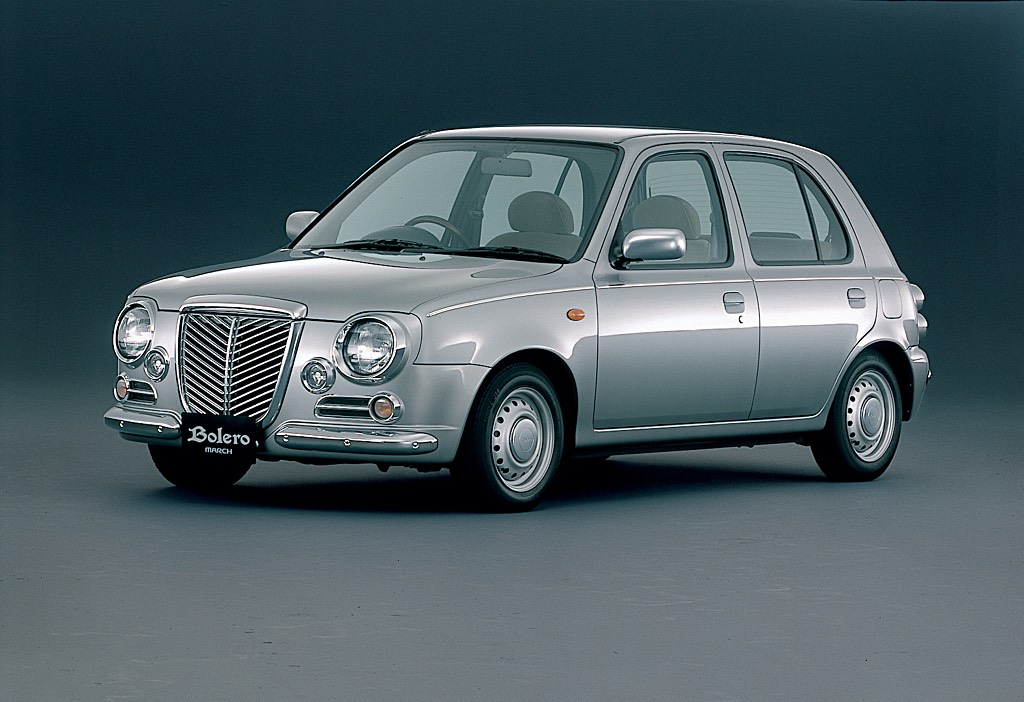
What is the Nissan March Bolero?
As you may have guessed from the title and the first paragraph: the third posting is focussing on the Nissan March Bolero. Just like the March Tango, the March Bolero is another special car built by Nissan’s Autech division. It became available in October 1997, shortly after the facelifted March K11 was launched and it replaced the March Tango. Just like Tango, Bolero is both a musical and dance style. For Bolero the dance and music are completely unrelated, which makes it confusing what Nissan intended for the March Bolero to represent. Given the musical note system for the basic March models, I’d say it would be the musical style.
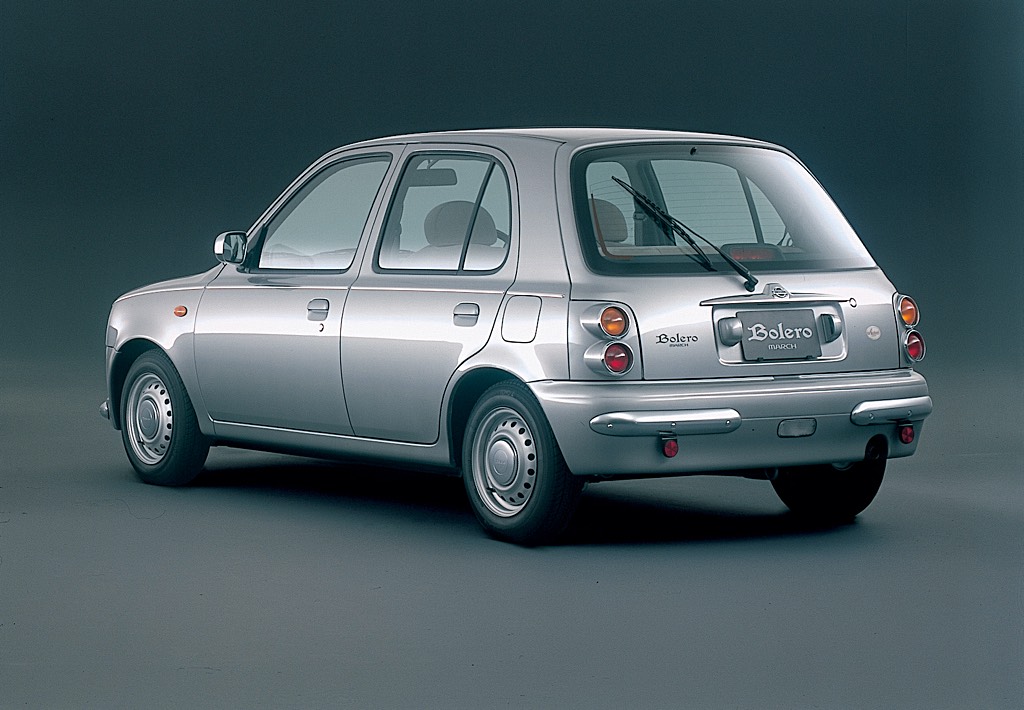
Just like the Tango, the Bolero was a retro-inspired car. So let’s dive a bit deeper into that subject.
Retro inspired
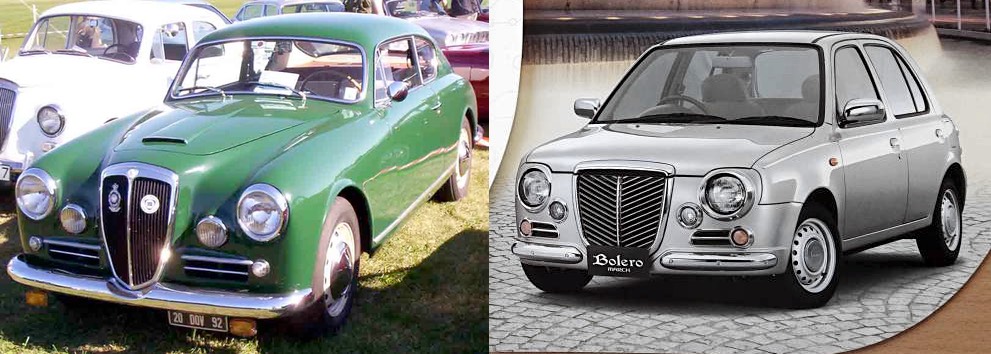
Just like the Tango, the Bolero got its retro looks from various European cars. It mimics almost the same styling as the Tango but is a little bit more refined. Where the Tango looked like a modern interpretation of 1950s European cars, the Bolero was an attempt to make it look as close as possible to a 1950s European car. The front grill and gills appear as if they were inspired by the Riley Elf and Wolseley Hornet.
However, previously I also named the Lancia Aurelia as the inspiration for the March Tango. This time the design department of Nissan seems to have copied almost the entire Aurelia coupé! Not only the front of the car but also the steel wheels with chromed centre caps. It’s almost as if one of the designers of Nissan shrunk the length of the car by 75% and kept the remainder as is:

Chrome
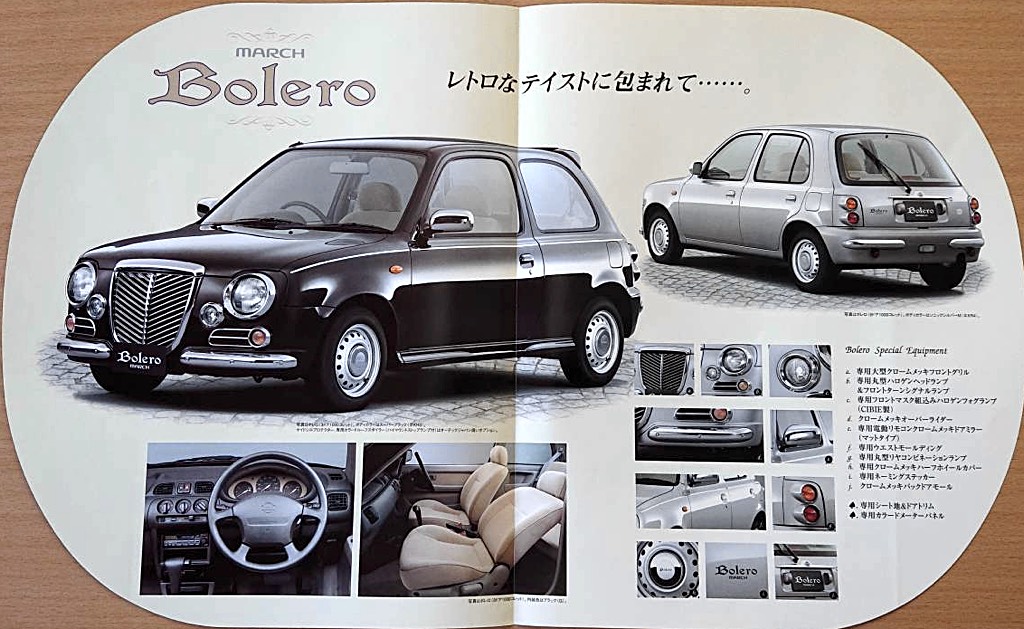
As we’re talking about 1950s inspiration, it has to feature chrome details. A lot of it. And if I say it’s a lot, then there is lots of chrome: chrome plated grill, chrome headlamp and turn signal surrounds, fog lamps with chromed surrounds, chrome plated bumpers, chrome plated remote door mirrors and finally chrome centre caps for the steel wheels. The chrome centre caps even featured the Bolero logo on them:
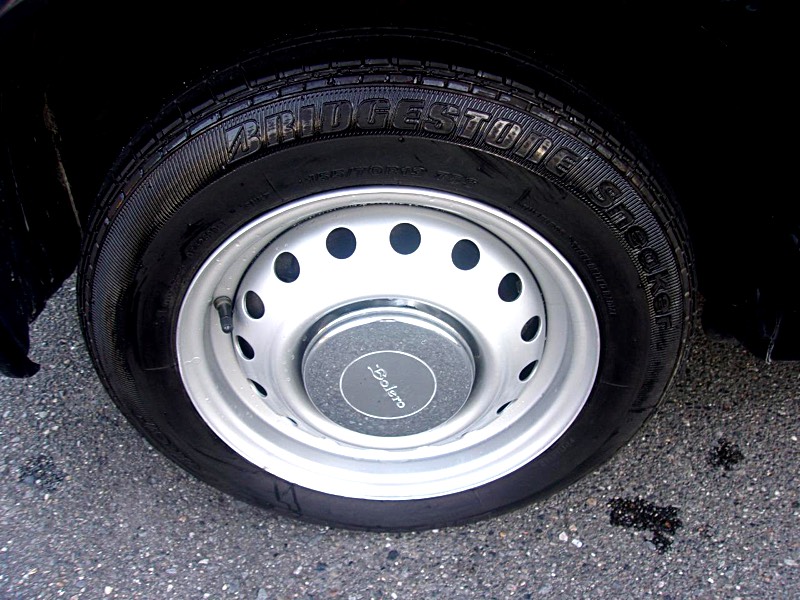
It’s a miracle Nissan’s designers didn’t continue the chrome theme on the inside of the Bolero! Talking about the interior, let’s have a look at that as well!
Wood grain and beige
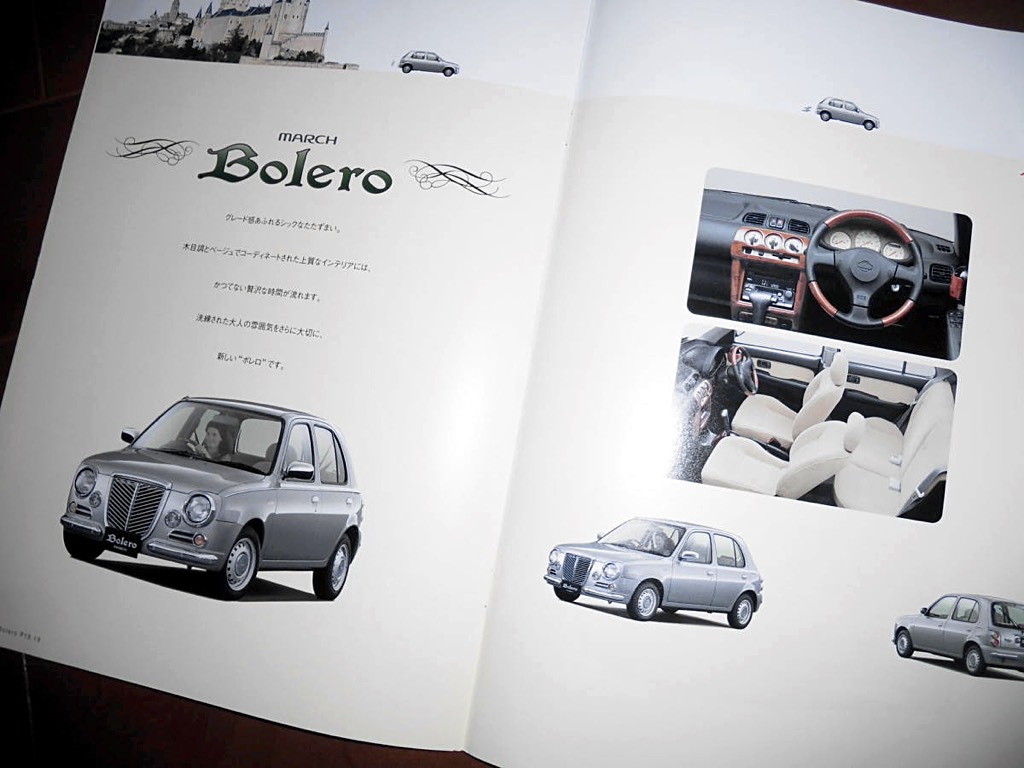
Inside the 1997 brochure, the March Bolero is described as “Chic appearance with a classy feel” and “You will have a luxurious time like never before”. Chic, Classy and Luxurious aren’t the things we would associate with a small car like the Nissan March. The Bolero clearly was targeting an audience that expected these things from a small car and didn’t find that in the standard March. This is underlined by the “High-quality interior is coordinated with wood grain and beige”. Wood grain is considered Chic and Luxurious. Nowadays we consider beige as dull, but back in the mid-1990s, beige would have been a much more Classy choice over the psychedelic prints of that era that were usually found in smaller cars.
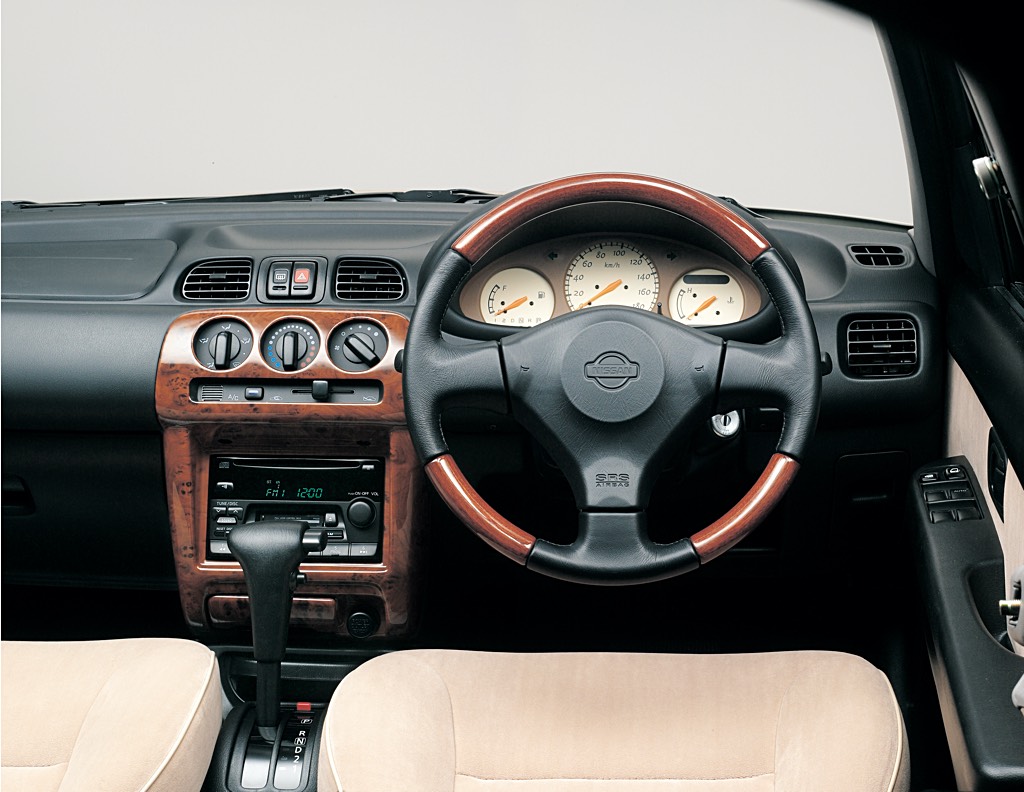
Wood grain and beige weren’t the themes inside the Lancia Aurelia. The Aurelia is an Italian car that featured metal and chrome on the interior during the 1950s. The wood grain and beige interior is more likely inspired by the 1950s and 1960s British car interiors, like the ones from the Aston Martin DB3 and Rolls Royce Silver Cloud.
Body shape and colours
There was a choice between any model within the range: two- and three-door, manual and automatic transmissions, but also 1.0 litre and 1.3 litre engines. Apart from this, the Bolero came with a lot of Luxury: it came standard fully decked out with power steering, air conditioning, power windows and ABS. In contrast, the Tango only featured power steering and power windows on the 1.3-litre engine variant.
The choice of colour was also more Classy. Where the Tango limits the choice between Classic Crimson Red, Organic Green, and Super Black, the Bolero limits the choice between Sonic Silver (KR4) and Super Black (KH3).
Sales hit
Apparently, the Bolero was much more loved than the Tango. So much so that it remained for sale until the end of the March K11 production. And even after the K11 rolled over to the K12, the Bolero became an Autech special again! When searching for Bolero’s for sale on Goo-net, I was able to find there currently are 9 for sale.
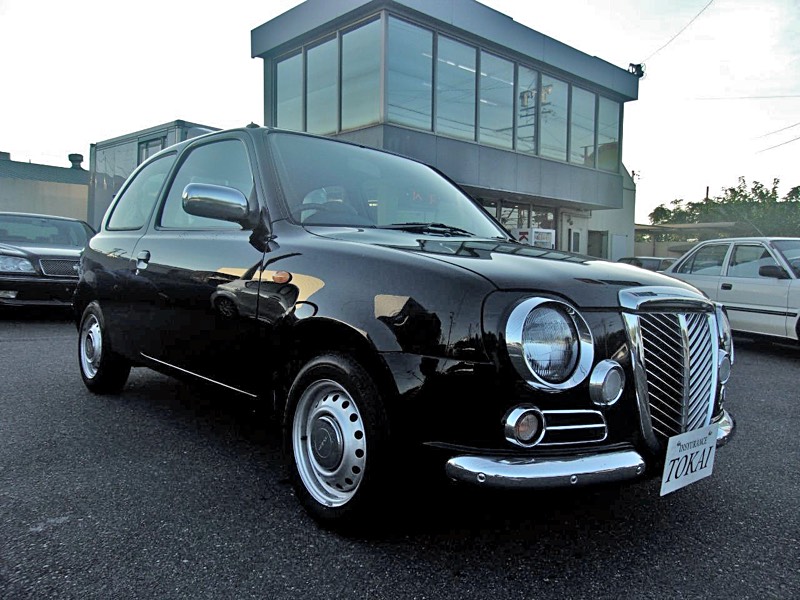
Six out of nine cars for sale are Sonic Silver, two are Sonic Black and the last one has been repainted in Topaz Mist. (Nissan Figaro colour) Most of these cars have low mileage, indicating they have been bought for incidental usage. Probably most of them were the second car owned by the family and used for things like grocery runs.
Conclusion
Just like the March Tango, the March Bolero wasn’t much more than a dressed-up March. No technical improvements were made and compared to the G# or Autostrada trim levels, the interior was, apart from wood grain inserts, bone stock. The Bolero was targeted towards a certain lifestyle: that of classy people. Snobs who like to drive a small commuter car with an upmarket flavour. Exactly the same as what British Leyland tried to do with the Mini and Allegro Vanden Plas. And that’s what you should consider this car: where British Leyland failed miserably, Nissan thrived!

That’s funny, as “bolero” has a rather unflattering connotation in Latin American Spanish and would never be used for a car. The saying goes: “más lento que un bolero”, which literally means “slower than a bolero”, because the style are ballads with a slooow tempo and dragging vocals–not the association you want for your luxury special edition!
Anyway, great series of articles, they are quite interesting.